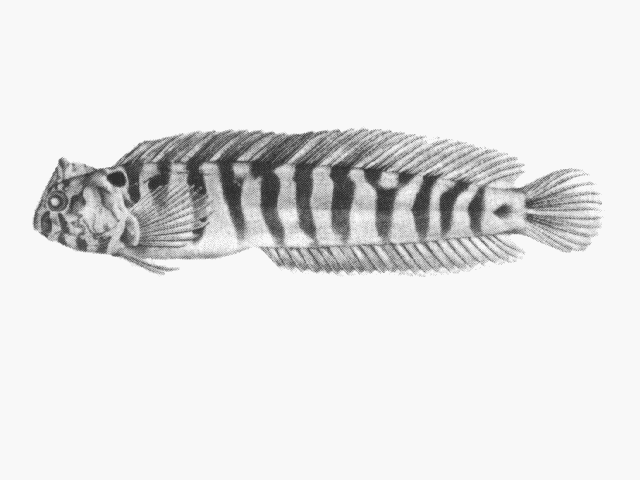| Blenniidae (Combtooth blennies), subfamily: Blenniinae |
| 6 cm SL (male/unsexed) |
|
demersal; marine |
| Western Indian Ocean: Bazaruto, Mozambique to Port Alfred, South Africa. |
|
Dorsal spines (total): 11-13; Dorsal soft rays (total): 19-21; Anal spines: 2-2; Anal soft rays: 21-23. Dark spot above gill opening; dark bands on body and upper part of the head (Ref. 4404). |
| Oviparous. Eggs are demersal and adhesive (Ref. 205), and are attached to the substrate via a filamentous, adhesive pad or pedestal (Ref. 94114). Larvae are planktonic, often found in shallow, coastal waters (Ref. 94114). |
|
Least Concern (LC); Date assessed: 27 March 2009 Ref. (130435)
|
| harmless |
Source and more info: www.fishbase.org. For personal, classroom, and other internal use only. Not for publication.

